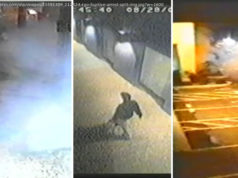Police fed the man’s photo into the Maryland Image Repository System, which matched it against tens of millions of photos from state drivers’ licenses, offender photos and an FBI mug shot database.
When the suspect in the mass shooting at the Capital Gazette in Annapolis, Maryland was taken into custody Tuesday, he had no identification and said little, so police turned to a sophisticated facial-recognition system, officials said.
Police fed the man’s photo into the Maryland Image Repository System (MRIS), which matched it against tens of millions of photos from state drivers’ licenses, offender photos and an FBI mug shot database.
It apparently returned a hit: Jarrod Ramos.
The case is the most high-profile use to date of MRIS, a cutting-edge and controversial tool that has been used by the Maryland State Police and other law enforcement agencies across the state since it launched in 2011.
The system uses algorithms to compare a suspect’s distinctive facial features against at least 7 million Maryland driver’s license photos, 3 million state offender images and nearly 25 million FBI mug shots, according to a 2016 report by the Georgetown Law Center on Privacy and Technology. The report found 16 states allow the FBI to compare faces of suspects against driver’s license photos.
MRIS initially drew little attention but became a focus for privacy and civil liberties advocates after documents obtained by the American Civil Liberties Union revealed it was used to monitor protesters in Baltimore following the death of Freddie Gray in 2015.
“With Maryland, we see one of the more aggressive deployments of facial recognition technology,” Clare Garvie, an associate at the Georgetown center, told the Baltimore Sun in 2016.
The Georgetown report found the use of the system had never been audited as of 2016. The report said it was unclear if Maryland’s Department of Public Safety and Correctional Services (DPSCS) scrubs the database to eliminate people who were never charged, had charges dropped or dismissed, or were found innocent.
A DPSCS official did not immediately respond to a request for comment, but an official told the Baltimore Sun in 2016 that authorities were “using it aggressively because we pursue criminals aggressively.”
Officials acknowledge in materials about the system that it can make mistakes in identifying people.
Civil liberties advocates are particularly concerned about the impact on minorities, given that research has shown some facial-recognition software has a harder time identifying the faces of African Americans. They are also concerned the system might eventually be used in conjunction with surveillance cameras to provide real-time scanning of streets.
The use of facial-recognition software by law enforcement has been a hot topic in recent months. In May, a coalition of groups called on Amazon.com to stop selling low-cost facial-recognition software called Rekognition to police because of concerns about surveillance of vulnerable communities. Amazon founder and CEO Jeff Bezos owns The Washington Post.






